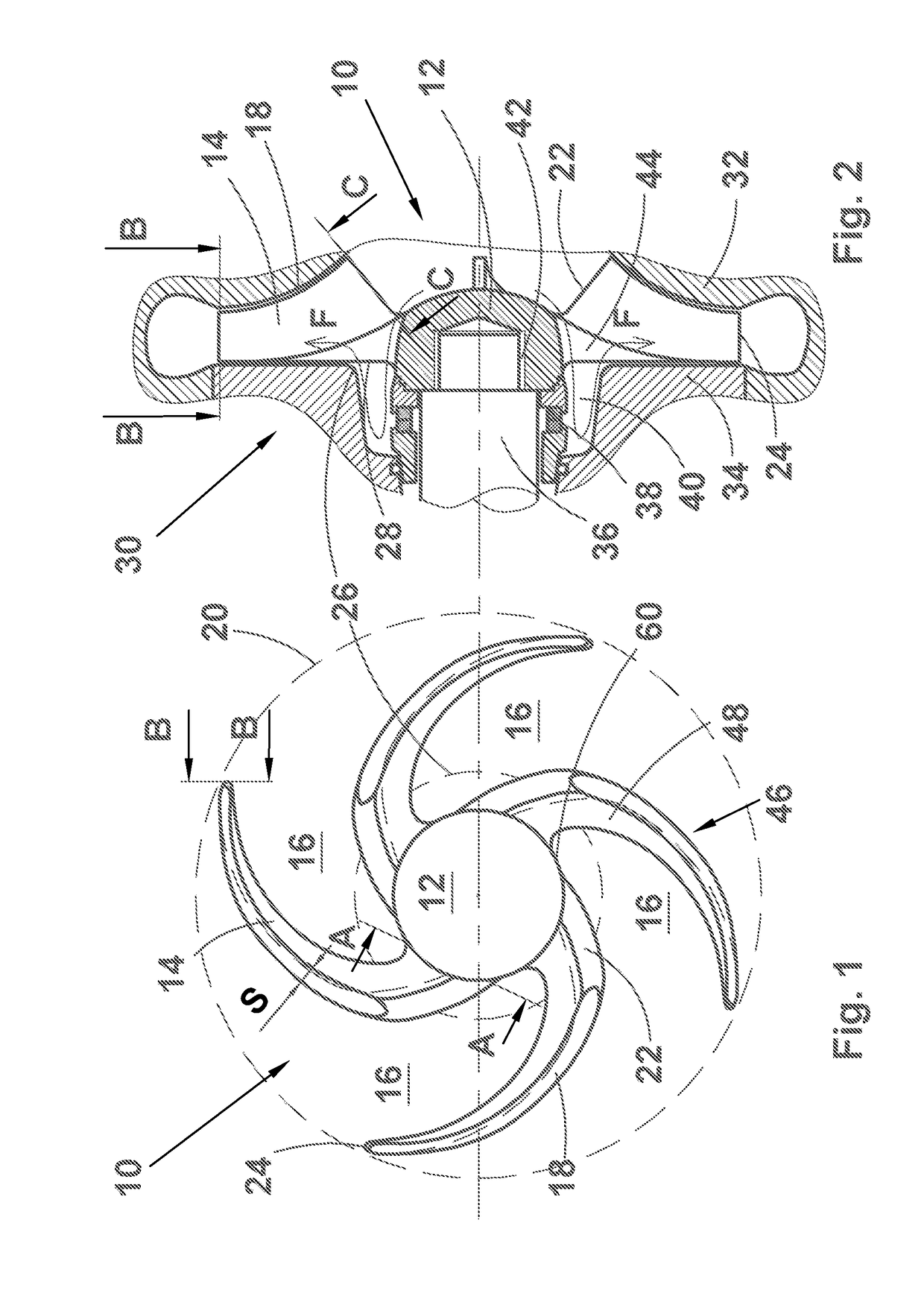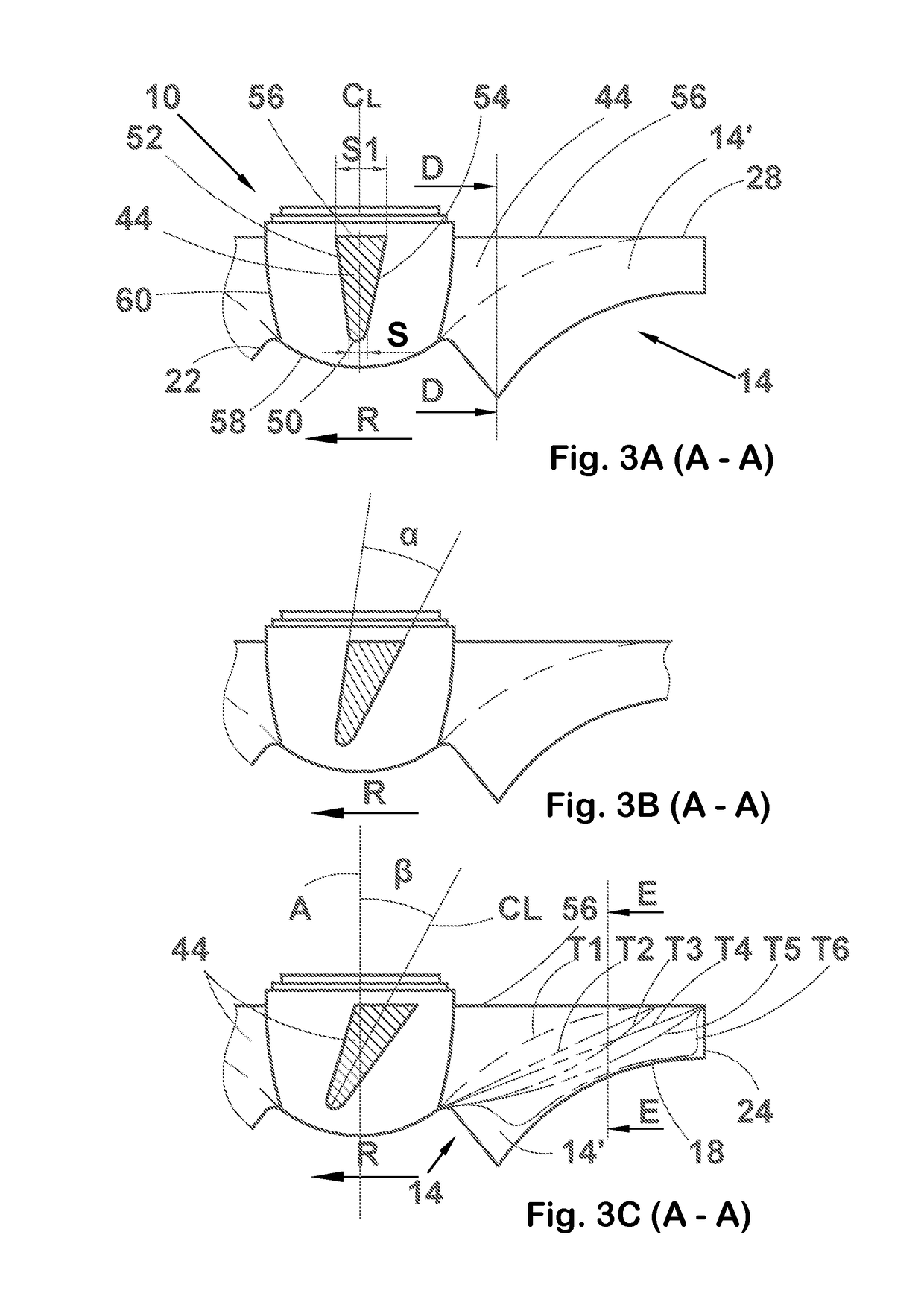Rotor for a centrifugal flow machine and a centrifugal flow machine
a centrifugal flow machine and flow machine technology, which is applied in the direction of machines/engines, non-positive displacement fluid engines, liquid fuel engine components, etc., can solve the problems of impellers not being able to ensure safe use of slide ring seals, user difficulty in manufacturing impellers, and inability to ensure the safety of sealing in all possible operating conditions
- Summary
- Abstract
- Description
- Claims
- Application Information
AI Technical Summary
Benefits of technology
Problems solved by technology
Method used
Image
Examples
Embodiment Construction
[0050]FIG. 1 illustrates a front view of a rotor in accordance with a preferred embodiment of the present invention. The rotor of FIG. 1 is especially applicable as an impeller of a centrifugal pump. The rotor 10 comprises a hub 12 and four working vanes 14 extending outwardly therefrom. The rotor vanes 14 leave flow chambers 16 there between via which the fluid advances from the inlet opening of a flow machine to the outlet opening thereof. It is an essential feature of the present invention that the flow chambers 18 are open all the way from the outer periphery or circumference (broken circle 20) of the rotor 10 to the outer surface 60 of the hub 12. Preferably, but not necessarily, the outer surface of the hub is a rotationally symmetrical (for instance conical or paraboloidal) surface. In other words, the open impeller of the present invention does not have any support disc extending from the hub for supporting the working vanes. Thus, the fluid has free and open access from the...
PUM
 Login to View More
Login to View More Abstract
Description
Claims
Application Information
 Login to View More
Login to View More - R&D
- Intellectual Property
- Life Sciences
- Materials
- Tech Scout
- Unparalleled Data Quality
- Higher Quality Content
- 60% Fewer Hallucinations
Browse by: Latest US Patents, China's latest patents, Technical Efficacy Thesaurus, Application Domain, Technology Topic, Popular Technical Reports.
© 2025 PatSnap. All rights reserved.Legal|Privacy policy|Modern Slavery Act Transparency Statement|Sitemap|About US| Contact US: help@patsnap.com



